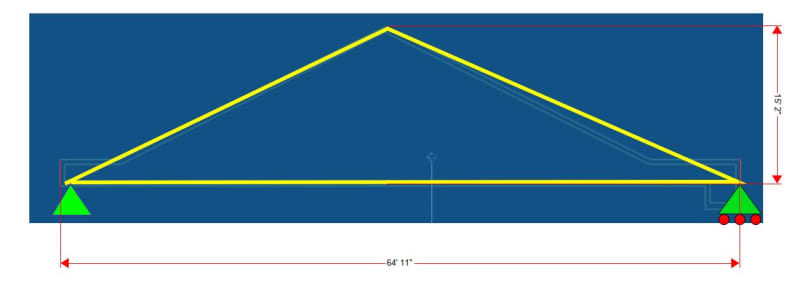
Is this truss profile manageable?
65'-0" span with bearing points far left and right of the profile.
Need the end extensions so can work with some slope concerns with getting the truss elevated at the center. The thinking goes that basically just build in a parallel chord truss and piggy back another truss on top. But in reality just build the truss this way.
It's kind of bugging me in one way but also seems ok to me in another.
If can design this way then will eliminate the need for 2 additional beams and all the additional support structure if they were needed to be placed at the normal heel location.
Figured this was a good place to start with the question.
Thanks.

